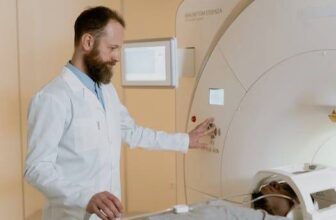Smartwatch Data Empowers Noninvasive Hypoglycemia Detection for People with Diabetes
How Smartwatch Data is Revolutionizing Diabetes Care
Smartwatches are revolutionizing diabetes care by providing real-time data that can be used to monitor and manage the condition. Smartwatches are equipped with sensors that measure glucose levels, heart rate, and other vital signs. This data is then transmitted to a smartphone or computer, allowing users to track their health and make informed decisions about their diabetes care.
Smartwatch data can be used to detect changes in glucose levels and alert users when they need to take action. For example, if a user’s glucose levels are too high or too low, the smartwatch can alert them to take the necessary steps to adjust their insulin levels. This can help prevent dangerous complications from diabetes, such as hypoglycemia or hyperglycemia.
Smartwatch data can also be used to monitor physical activity levels. This data can be used to set goals and track progress, helping users stay motivated and on track with their diabetes care. Smartwatches can also be used to remind users to take their medications or check their blood sugar levels.
Smartwatch data can also be used to provide personalized advice and recommendations. For example, if a user’s glucose levels are too high, the smartwatch can suggest foods that are low in carbohydrates or provide tips on how to reduce stress. This can help users make better decisions about their diabetes care and improve their overall health.
Smartwatch data is revolutionizing diabetes care by providing real-time data that can be used to monitor and manage the condition. This data can be used to detect changes in glucose levels, monitor physical activity levels, and provide personalized advice and recommendations. By using this data, users can make informed decisions about their diabetes care and improve their overall health.
Exploring the Benefits of Noninvasive Hypoglycemia Detection with Smartwatch Data
The ability to detect hypoglycemia, or low blood sugar, is an important tool for managing diabetes. Unfortunately, traditional methods of detection, such as finger-pricking and blood tests, can be invasive and uncomfortable. Fortunately, recent advances in technology have made it possible to detect hypoglycemia noninvasively using data from smartwatches.
Smartwatches are equipped with a variety of sensors that can detect changes in the body, such as heart rate, skin temperature, and motion. By analyzing this data, it is possible to detect changes in the body that indicate hypoglycemia. For example, a decrease in heart rate and an increase in skin temperature can be used to detect hypoglycemia. Additionally, smartwatches can be used to track activity levels, which can be used to detect changes in energy levels that may indicate hypoglycemia.
The use of smartwatch data to detect hypoglycemia offers several potential benefits. First, it is noninvasive and does not require any additional equipment or supplies. Second, it is more convenient than traditional methods of detection, as it can be done anywhere and at any time. Third, it is more accurate than traditional methods, as it can detect changes in the body that may indicate hypoglycemia before symptoms become apparent. Finally, it is more cost-effective than traditional methods, as it does not require any additional supplies or equipment.
In conclusion, the use of smartwatch data to detect hypoglycemia offers several potential benefits. It is noninvasive, convenient, accurate, and cost-effective. As such, it is an attractive option for those looking to manage their diabetes more effectively.
The Impact of Smartwatch Data on Diabetes Management and Treatment
The advent of smartwatch technology has revolutionized the way in which diabetes is managed and treated. Smartwatches are able to collect and analyze data related to a person’s health, such as heart rate, blood pressure, and glucose levels. This data can be used to monitor a person’s health and provide valuable insights into their diabetes management and treatment.
Smartwatches can be used to track a person’s glucose levels throughout the day. This data can be used to identify patterns in a person’s glucose levels, which can help inform their diabetes management and treatment. For example, if a person’s glucose levels are consistently high, they can adjust their diet or medication to better manage their diabetes. Additionally, smartwatches can be used to track a person’s physical activity, which can help them stay active and maintain a healthy lifestyle.
Smartwatches can also be used to monitor a person’s heart rate and blood pressure. This data can be used to identify any potential issues related to a person’s cardiovascular health, which can help inform their diabetes management and treatment. For example, if a person’s heart rate or blood pressure is consistently high, they can adjust their diet or medication to better manage their diabetes.
Finally, smartwatches can be used to track a person’s sleep patterns. This data can be used to identify any potential issues related to a person’s sleep, which can help inform their diabetes management and treatment. For example, if a person is not getting enough sleep, they can adjust their diet or medication to better manage their diabetes.
In conclusion, smartwatch technology has revolutionized the way in which diabetes is managed and treated. Smartwatches can be used to collect and analyze data related to a person’s health, such as heart rate, blood pressure, and glucose levels. This data can be used to monitor a person’s health and provide valuable insights into their diabetes management and treatment.







